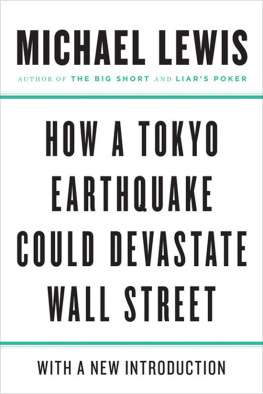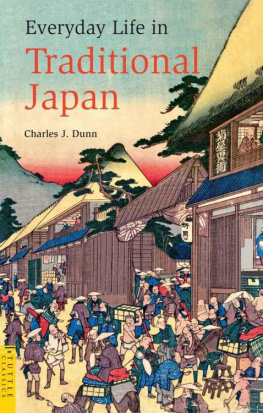THE GREAT KANT EARTHQUAKE AND THE CHIMERA OF NATIONAL RECONSTRUCTION IN JAPAN
Contemporary Asia in the World
Contemporary Asia in the World
David C. Kang and Victor D. Cha, Editors
This series aims to address a gap in the public-policy and scholarly discussion of Asia. It seeks to promote books and studies that are on the cutting edge of their respective disciplines or in the promotion of multidisciplinary or interdisciplinary research but that are also accessible to a wider readership. The editors seek to showcase the best scholarly and public-policy arguments on Asia from any field, including politics, history, economics, and cultural studies.
Beyond the Final Score: The Politics of Sport in Asia, Victor D. Cha, 2008
The Power of the Internet in China: Citizen Activism Online, Guobin Yang, 2009
China and India: Prospects for Peace, Jonathan Holslag, 2010
India, Pakistan, and the Bomb: Debating Nuclear Stability in South Asia, umit Ganguly and S. Paul Kapur, 2010
Living with the Dragon: How the American Public Views the Rise of China, Benjamin I. Page and Tao Xie, 2010
East Asia Before the West: Five Centuries of Trade and Tribute, David C. Kang, 2010
Harmony and War: Confucian Culture and Chinese Power Politics, Yuan-Kang Wang, 2011
Strong Society, Smart State: The Rise of Public Opinion in Chinas Japan Policy, James Reilly, 2012
Asias Space Race: National Motivations, Regional Rivalries, and International Risks, James Clay Moltz, 2012
Never Forget National Humiliation: Historical Memory in Chinese Politics and Foreign Relations, Zheng Wang, 2012
Green Innovation in China: Chinas Wind Power Industry and the Global Transition to a Low-Carbon Economy, Joanna I. Lewis, 2013
THE GREAT Kant
EARTHQUAKE
and the
CHIMERA of NATIONAL RECONSTRUCTION in JAPAN
J. CHARLES SCHENCKING
COLUMBIA UNIVERSITY PRESS
NEW YORK

Columbia University Press
Publishers Since 1893
New York Chichester, West Sussex
cup.columbia.edu
Copyright 2013 Columbia University Press
All rights reserved
E-ISBN 978-0-231-53506-9 (e-book)
Library of Congress Cataloging-in-Publication Data
Schencking, J. Charles.
The great Kant earthquake and the chimera of national reconstruction in Japan / J. Charles Schencking.
pages cm
Includes bibliographical references and index.
ISBN 978-0-231-16218-0 (cloth : alk. paper) ISBN 978-0-231-53506-9 (ebook)
1. Kant Earthquake, Japan, 1923. 2. Disaster reliefGovernment policyJapanHistory20th century. 3. City planningSocial aspectsJapanTokyoHistory20th century. 4. Tokyo (Japan)History20th century. I. Title.
DS888.S45 2013
952.032dc23
2012048647
Cover image: Uchida Shigebumi, ed., Taish daishin taika no kinen
Cover design: Jordan Wannemacher
A Columbia University Press E-book.
CUP would be pleased to hear about your reading experience with this e-book at .
References to websites (URLs) were accurate at the time of writing. Neither the author nor Columbia University Press is responsible for URLs that may have expired or changed since the manuscript was prepared.
For Janet
Chimera
|kmi()r|
|ki-meer-uh|
noun
1 (Chimera) (in Greek mythology) a fire-breathing female monster with a lions head, a goats body, and a serpents tail
2 a thing that is hoped or wished for but in fact is illusory or impossible to achieve
CONTENTS
FIGURES
TABLES
Oh! How I wish I could feel an earthquake! is generally among the first exclamations of the newly-landed European. What a paltry sort of thing it is, considering the fuss people make about it! is generally his remark on the second earthquake (for the first one he invariably sleeps through). But after the fifth or sixth he never wants to experience another; and his terror of earthquakes grows with length of residence in an earthquake-shaken land, such as Japan has been from time immemorial.
Basil Hall Chamberlain, 1905
In March 2011 the world was reminded of the extraordinary force that earthquakes and tsunamis unleash. In dramatic fashion the Thoku catastrophe revealed how vulnerable parts of our planet are to natural hazards. Disasters do more than destroy, however. They also compel reflection, inspire optimism, and lead people to believe that something better can and will emerge from the devastation. Some people suggest that disasters possess the potential to change everything.
Numerous individuals opined that the Great Thoku Earthquake would transform Japan. Some argued that rising to the challenge of recovery would instill citizens with a newfound confidence and make people once again proud to be Japanese. Many predicted that reconstruction spending would provide the economic stimulus necessary to end two lost decades of deflation. Still others posited notions that the Japanese people might lose their faith in science and demand a reorientation of the nations economy, or that humanitarian aid from China might help resolve long-standing territorial disputes between both countries. Will these transformations ever materialize or will contestation and resistance limit policy outcomes? History suggests the latter.
In September 1923 Japan suffered a far more deadly natural calamity. Then, a magnitude 7.9 earthquake and resulting firestorms killed more than 120,000 people and turned roughly half of Tokyo and virtually all of Yokohama into blackened, corpse-strewn wastelands. Amid this desolate landscape, bureaucratic elites suggested that a once-in-a-lifetime opportunity to rebuild Tokyo as a modern metropolis had emerged. Others argued that the cataclysmic Great Kant Earthquake could, if manipulated artfully, rouse urbanites from their increasingly consumer-oriented, hedonistic mindsets and enable the government to forge a more moderate, wholesome moral path for social regeneration. Even foreigners involved in humanitarian assistance succumbed to the postdisaster culture of optimism. Admiral Edwin Alexander Anderson, who oversaw the initial US relief effort in Tokyo, informed navy officials upon his return to US territoryat Pearl Harbor, Hawaiithat American aid and Japanese appreciation of such aid had so firmly cemented friendly relations between both countries that no possibility of war in the Pacific existed in his generation.
We know that Andersons dreams of a peaceful future did not survive. Did the ambitions of starry-eyed planners, politicians, and commentators who wished not only to rebuild Tokyo but also to reconstruct Japanese society suffer a similar fate? If so, why? Moreover, what did Japans experience at this destructive, dislocating, introspective, and yet inspiring moment tell us about interwar Japan and the anxieties, ambivalence, and embrace of modernity? This book explores these questions. My findings suggest that the handmaidens of disaster opportunismnamely, contestation, resistance, and the desire for a quick return to routine and familiaritytempered dreams of lasting, transformative reconstruction. In the aftermath of catastrophe, when everything in the physical world seems anomalous, the tugs of resilience and the attraction of normalcy often prove intense.
I can write with certainty, however, that the Great Kant Earthquake transformed one thing fundamentally: me as a historian. I began this project in 2003 hoping to document the reconstruction of Tokyo from the elite, political, economic, and urban planning level. I wanted to trace the dreams of reconstruction opportunism and explore why Got Shinpeis grand 4 billion plan failed to materialize and change the built environment of Tokyo in radical and profound ways. I traced the opportunistic dreams inspired by the calamity and the contested realities associated with reconstruction through parliamentary transcripts; the diaries, memoirs, and reflections of key political and urban planning elites; and the minutes of key reconstruction deliberative and consultative committees. Though I published these findings in
Next page





